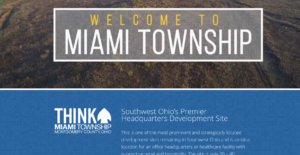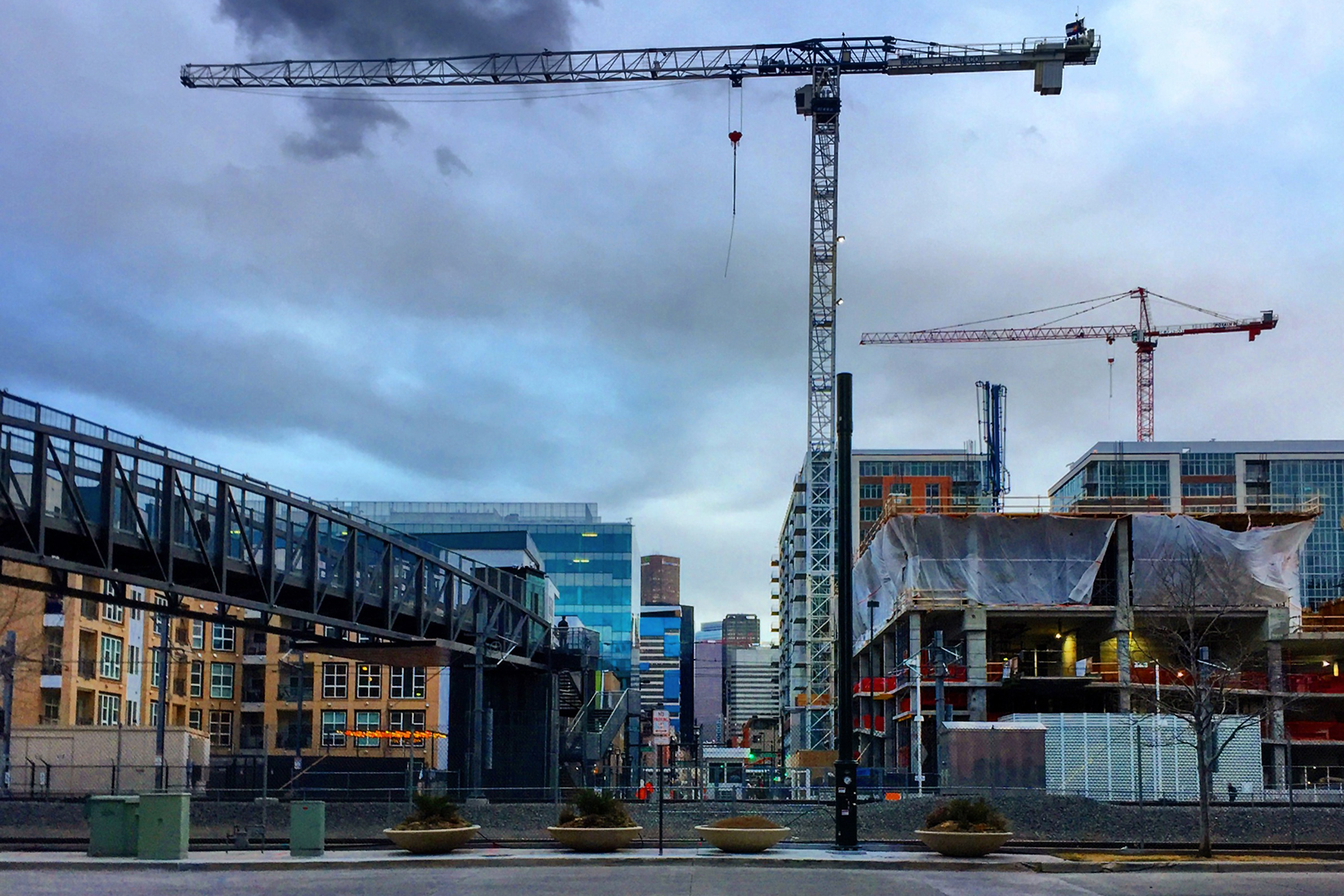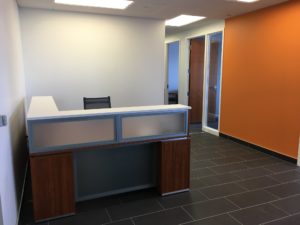Looking to attract, grow and retain businesses and investment in your community? Ever-increasingly, marketing materials need to be tech-agile, innovative, and captivating to garner attention from site selectors, investors, developers, etc. Break into the future of marketing when you work with the site selection and economic development professionals at Juniper to create a custom ArcGIS Story Map powered by Esri. Story Maps combine the storytelling basics of text and multimedia with the power of interactive, informative, and visually appealing maps. Just to show how engaging this platform is, Esri conducted a study which found that people on average spent more time on a Story Map than a typical web page .. 37 seconds on a web page versus nearly SIX MINUTES on a Story Map! Want to see how Juniper Solutions and ArcGIS Story Maps can help your community reach their attraction and retention goals? Click Here to view Juniper Solution’s guide to Story Maps: “The Next Generation of Community Storytelling”.
For Economic Development Organizations, Website Audits Are Simple & Effective Business Attraction Tools
Tax season is here, but don’t let the word ‘audit’ scare you. In the economic development context, all seasons are appropriate for a website audit. Revisiting the quality and currency of your website’s content from a site selector’s perspective should be an annual priority. Site selectors are frequently auditing your community’s credentials one broken link at a time. So, dust off the cobwebs on that 2016 data and let the website help your community get past the desktop research phase.
Recently, Juniper’s economic development clients have found a great deal of value in conducting a website audit. It’s important to understand that the first impression a community makes to a company is unlikely to be a firm handshake, rather its website. So, how does the auditing process work? Leveraging Juniper’s 16 criteria for site selection, we navigate through an organization’s website to ensure the content is reflective of each important factor. We also count how many clicks it takes to get to readily available or buried content. So, whether it’s a self-assessment or third-party critique, here are just two examples where we see communities omit or neglect to include important information.
Start with ‘Workforce.’ It’s not about how many people you have in your community, it’s about what they can do, that defines a workforce. Ditch the population cohort table and focus on highlighting the key industries that employ the majority of people. This will help a site selector assess the overall laborshed and specific skills a community can offer a prospective employer. If employment by sector and wages data is available, even better. In addition, make sure the statistics are up-to-date. We guarantee your employment landscape today, looks quite different from the 2014 American Community Survey data. This really applies to all data on the website. The Pittsburgh Regional Alliance’s website is an excellent example. Their data is recent, credibly sourced from the Bureau of Labor Statistics, and also quickly accessed and captured.
Next is ‘Accessibility.’ Geography matters in site selection. One way to get your community on a site selector’s map is to get them oriented as fast as possible. What better way to accomplish this than with a regional map on the homepage and an entire section of maps. The regional map can be a static image or interactive, but should immediately identify your community’s relative location to other cities/states. We work with companies and communities of all size, so this is particularly important if your town or county is not a household name. For example, if you’re webpage just says “Welcome to Washington County,” well, there are 31 of you across the country. We like Colorado Springs Chamber & EDC‘s map (and the entire site) on their homepage as a static map example. It’s aesthetically appealing, simple, and immediately identifies its relative location. Another mapping pet-peeve is the concentric ring maps with distance in miles or as the “as-the-crow-flies.” Trucks and trains don’t travel that way, and neither will a company’s products. It’s more meaningful to provide drive-time maps or at least a table of drive times to the nearest cities.
These are just two out of 16 important site selection factors Juniper assesses during an audit, but they’re all critical. Omitting these and others like ‘Quality of Place,’ Occupancy Costs, or Incentives could send a signal that your community simply doesn’t have them. While, websites will always vary by structure, aesthetic, and of course, cost, high-quality content is paramount. Ultimately, a compelling website tells site selectors your community will be prepared when they want a second impression. Happy auditing!
Beerhead Taps into Location Intelligence for New Ohio Restaurants
Cleveland, Ohio (November 5, 2018) — The American craft beer bar franchise, Beerhead Bar & Eatery, has recently partnered with Juniper Solutions, a site selection and real estate firm based in Cleveland, OH. Beerhead leveraged Juniper’s location analytics platform to identify target areas to open new Ohio locations including the most recently announced locations in Avon and Concord Township, OH
“Beerhead has had tremendous success growing organically in both urban and suburban markets, but with increased competition and a broad customer audience, we knew a more data-driven site selection process would be required,” said Aaron Rasmussen, Ohio Market Franchisee. “First, Juniper helped us run the analytics to locate the ideal markets, then assisted us through the entire real estate procurement process. Juniper was a complete turn-key solution for our needs, he added.”
By leveraging consumer lifestyle and expenditure data around their highest performing locations, Beerhead was able to unlock new trade areas to expand the brand throughout Ohio. Beerhead expects to announce the new Ohio locations this fall. Beerhead will open in Chicago’s Wrigleyville in the spring of 2019 and currently has eight locations Illinois, Michigan, New York, Ohio, and Pennsylvania.
About Beerhead Bar & Eatery
Founded in 2012 under the original name of The Beer Market, Beerhead is an emerging American craft beer bar that marries the appeal of offering nearly 500 brands of locally and regionally brewed beer, wine, and other locally sourced beverages and food offerings in a contemporary, yet timeless atmosphere complete with live music and communal tables. Beerhead began franchising in 2015 in an effort to expand its favorite local beer pub vibe to other communities, breweries and distilleries.
For more information, visit http://beerheadbar.com.
Live, Work, Played Out!
Quality of place, ranging from cost of living to school ratings, is an important component of economic development from a business attraction standpoint. Communities with quality of place and available real estate assets may make the site selection short-list, but why not selected? What is it that sets other communities apart when all traditional site selection factors are similar? It’s the oft misunderstood ‘x-factor’ we like to call authentic brands which falls under the broader marketing function of economic development. Creating or having an authentic brand is not a difficult endeavor per se; simply play to your strengths. Successful communities identify their inherent qualities that make them truly unique and a brand is naturally born. A potent and authentic brand is a powerful weapon in the business attraction arena. Quick note; as Cleveland, Ohio natives, we feel pretty qualified to write on this topic (i.e. “Mistake On The Lake”).
Economic development departments and visitors’ bureaus around the country have fallen victim to thinking this place-based authenticity can be created by simply hiring an outside marketing firm. These branding exercises can often be expensive endeavors, by the way. Sure, having an outsider’s perspective can be important in how a place is viewed, but we have witnessed too many communities invest in soul-searching marketing campaigns. While some are successful, most finished products leave these places seeming more generic than ever. Here is our favorite: “Live, Work, Play.” This has become the official slogan for Anywhere, USA. Nothing says “we’re boring” like the “Live, Work, Play” sub-text beneath a community’s logo. We understand the intention was to brand places as one-stop shops for all lifestyle needs, but it is PLAYed out, conceptually vague, and lacks identity. It has been used at varying levels too, ranging from small community adoption to state-wide use. Do you think Michigan prompted 4.6 million trips in 2015 with “Live, Work, Play?” No, it was Pure Michigan that became their authentic brand. While this was a tourism campaign, it certainly has economic development implications. Admittedly, the Michigan campaign was created by a marketing firm, but they live and breathe the brand as a firm based in Birmingham, Michigan. Bottom line, whether for real estate or tourism, strong place brands can impact the perceptions of site selectors and executive decision-makers.
A slogan cannot save your economy and not every community can brand its way to prosperity with a catchy, t-shirt-worthy slogan, but remember to be authentic. Is the “Keep Austin Weird” slogan its x-factor? No, it’s the city’s weirdness, however that may be defined. Either way, this brand came naturally to them. The slogan was coined by an Austin Community College professor and later adopted by the Austin Independent Business Alliance to promote small business. So we say to communities across the country, just be yourself and the virtue of authenticity will come naturally. We all live, work, and play somewhere – so tell them something unique about yourself. As they say in Peculiar, Missouri, “…the odds are with you.”
Critical Site Selection Components – Part I: Workforce & Quality of Place

Marietta, Ohio – Photo Credit: Deluxe.com
As site selectors and economic development consultants, Juniper Solutions’ corporate clients and economic development practitioners often ask what the key drivers in the site selection process are. While certain factors like energy costs can certainly be a more mission-critical item for a data center operator compared to a call center, there are critical components that Juniper reveres as fairly unanimous for most industry sectors.
This article is part one of a multi-post series that will highlight the primary site selection variables, their relevance, and how they are often interdependent throughout the real estate advisory process. With that said, Juniper believes the primary site decision influencers include:
- Workforce (attraction/retention/availability)
- Cost of doing business
- Image of community
- Infrastructure
- Freeway access
- Speed to market/proximity to clients
- Business strategy
- Existing real estate facilities
- Tax structure
- Cost of energy and availability
- Incentives
- Supply-chain strategy
- Quality of place
For this post, Juniper will look at the interdependent nature of workforce and quality of place. Juniper finds that there is a strong interdependence with quality of place as a sense of community and its lifestyle amenities go hand-in-hand with attracting and retaining the most dynamic workforce. Workforce is constantly identified by corporate leadership/decision-makers as the single most important factor when making location decisions. Studies also indicate a direct correlation between quality of place and happiness. These same studies indicate that while quality of place matters to all age groups, they tend to matter much more to younger age cohorts (25-34 and 35-49). This is logical given these are the formative years when these age groups shape their careers, purchase real estate, and have children. More times than not, major life events tend to geographically anchor individuals, therefore defining community’s workforce. Accordingly, Juniper recommends that its clients continuously promote and study how to optimize quality of place for this group, so that they are incentive to plant roots.
How quality of place is defined can vary between age groups, according to studies. Younger age groups consider “culture, affordability, regional access, shopping, multi-modal transportation, creative class presence, and finally, recreational and entertainment amenities” as the critical factors when measuring quality of place. On the other hands, older age groups place value on many of these same factors but also consider “safety, strong educational programs, prosperity, healthcare access, and government services” as key influencers in establishing how they define community attractiveness.
It is worth mentioning that quality of place is not reserved for high-density urban areas. Juniper’s site selection experience has been witness to small to mid-size areas competing favorably with large cities. This is echoed in the above-cited article, where “[researchers] find that quality of place plays a bigger role in medium-sized metros than in smaller ones.” The historic main street districts of smaller towns can have a compelling story to tell when competing for a site selection project. They can offer companies the “big-fish-in-a-little-sea” experience. Of course, it’s important to consider how attributes like limited traffic congestion and real estate affordability can strongly influence people’s perception of quality of place. A few examples such as Greenville (SC), Holland (MI), and Findlay (OH) are just a few small-to-mid-size areas where Juniper has first-hand experience working with communities on attraction and retention success stories, mainly due their ability to create and promote a high-quality of place.
Juniper reminds its clients, both companies and communities, that it’s not just a “build-it-and-they-will-come world” anymore. Companies are finally paying attention to and seeking out places that score highly on quality of place and workforce. Even if it costs companies a little more over the long-run, they are finding the value proposition in other facets, not simply energy costs or incentives. Ultimately, Juniper believes these two variables are highly interdependent and remain crucial to business location decisions.
Your Community’s Real Estate Inventory: Lackluster or Lack Thereof?
Is your community losing business attraction opportunities due to the lack of commercial real estate inventory? Perhaps it’s not the lack of inventory, rather it’s the lackluster product? Perhaps both. Whichever the case may be, many communities are finding themselves constrained by these supply issues, which is ultimately impacting their economic development abilities. These supply-side issues are sending communities scrambling to add real estate inventory to meet the immediate growth demands that companies have. These immediate growth needs tend to result from a company landing a new account or a new customer, straining them to deliver products or services without the ability to wait for developers to build them new facilities in a short period of time. If your community has available product today, be proactive by conducting a market evaluation. Determine how long that supply may last based on current trends, new tenant arrivals or departures, new construction starts, and what may be functionally obsolete in the coming years. In essence, avoid the “shortage scramble” by assessing how existing and new inventory will allow for sustained economic growth.
In order for communities to analyze the depth of their real estate marketplace, it’s important to consider a few of the following critical factors:
- Historical Absorption Rates
- Vacancy Rate & Existing Supply
- Real Estate Development Pipeline
- Large Blocks of Contiguous Space
- Physical Land and Building Attributes of Available Real Estate Product
By conducting a thorough investigation of historical absorption rates (leased and sold properties), existing supply, and the aforementioned factors, communities can generally get a good sense of how much “bandwidth” is left in their real estate market. This planning assessment is essential to meet the facility needs for business attraction and retention prospects over the long term. The physical attributes and quality of inventory is important too, not just the quantity of square footage. If certain industry segments are part of the economic development and attraction strategy, it’s imperative to know how that industry uses real estate, ranging from outside storage space to overhead crane capacity. Additionally, it’s important to consider other real estate externalities like power and telecommunications requirements. In short, successful communities go beyond marketing their square footage and focus on the functionality of their real estate.
Upon completion of a market and inventory evaluation, assess the results. Test the assumptions and data, by engaging with local and regional development community including brokers, site selectors, and builders. When clients experience a supply shortage in the 25,000 to 50,000 square-foot range (which happens frequently to Juniper’s clients, due to larger user pool in this size range) in a given market, the clients may be forced to look elsewhere to deliver its business model. This is obviously not an ideal business retention and attraction strategy for communities. At any rate, this market and inventory evaluation activity by a communities’ development departments is viewed favorably by developers and serves as a mutual opportunity to exchange perspectives. The effort in and of itself will provide an indication that your community is a pro-active, business-friendly, and committed to long-term growth. As mentioned before, responding to real estate inventory corrections should be a proactive, not reactive, exercise, as the development cycle from financing to permitting can take upwards of two years, once a need or deficiency has been identified.
If your community or economic development organization is seeking to understand the real estate opportunities and risks within your community, Juniper would welcome the opportunity to help you not only analyze and assess your portfolio, but also develop an engagement strategy with the development community that addresses your long-term objectives.
Juniper presents on Critical Site Selection Factors in Nashville
Thank you to Williamson Inc. Economic Development for the opportunity to speak to the business community and regional stakeholders on critical site selection factors at the 2017 Williamson County Outlook event in Franklin, TN.
Southwest Ohio’s Premier Headquarters Development Site
 Juniper is excited to partner with Miami Township on a Headquarters attraction campaign for a 25 acre development site within the Southwest Ohio region. This site benefits from a large labor shed given it’s strategic location between the Cincinnati and Dayton market’s. More on this unique opportunity can be found at ThinkMiamiTownship.com. Juniper will be performing a national targeted industry and site selector outreach program on behalf of Miami Township
Juniper is excited to partner with Miami Township on a Headquarters attraction campaign for a 25 acre development site within the Southwest Ohio region. This site benefits from a large labor shed given it’s strategic location between the Cincinnati and Dayton market’s. More on this unique opportunity can be found at ThinkMiamiTownship.com. Juniper will be performing a national targeted industry and site selector outreach program on behalf of Miami Township












